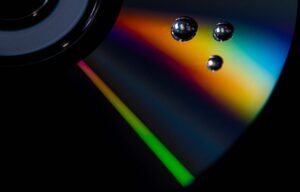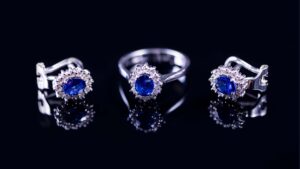Reference and Communication:
In order to link your photography to a message and convey this to your audience, there is the possibility of citing past famous works from the media landscape and incorporating different variants of references. It is irrelevant whether the descriptions are from novels, scenes from films, theater performances or other media products. References are references to and representations of statements, facts or special items of other works that have already been created and published. Specifically, these are visual representations of actions and scenes of performing arts that have already been shown in this or a similar way, or of individual illustrations of visual arts. By citing a famous work, the artist plays on the human ability to recognize similarities and to make references to what is already known. In photography, optical references are the most commonly used due to their nature. This is particularly useful in commercial advertising photography to refer to aspects that are already known and to convey messages to the viewer that are easy and quick to understand. But you must keep this important point in mind that you must mention the source of the quote or the photo you used as a reference, otherwise you will be accused of plagiarism.
For example, I copied the photo above from one of the photos of the German photographer “Peter Kitman” (1916-2005). I think it is an interesting photo. For this reason, I tried to take a picture of a CD almost like this German photographer. Professional ethics require that because the photo is a copy, the source and the name of the original photographer should be mentioned. Peter Keetman (1916-2005), he became known through a series of photos he took of the production of the Beetle at the VW plant in Wolfsburg. Here, too, it is important to take a close look at the whole as well as at the details. He revolutionized the view of products and industry through free work in the VW factory. His reduction to forms in order to depict individual parts, even in quantity, is impressive. Using the basics of communication, you can make specific statements with your photographs and convey them to your audience. Depending on the area of application, such communication is of course more in demand than the pure aesthetics of the image and vice versa. Commercial product photography often focuses on the aesthetics of the product, but messages can also be placed here in a targeted manner.
We can use “symbolism” as a very important factor to enhance the authenticity of our photos. This does not only mean the incorporation of symbols, i.e. signs whose meaning must first be learned due to a lack of similarity to their statement (e.g. white dove = peace). Icons, indices and text can also be important keys to expanding your message in the picture. They usually act like additional information elements that support the design elements mentioned above and should fit homogeneously into the overall composition. Symbols in particular can reinforce your message, as it takes the viewer time to place them and apply their meaning to the rest of the composition. This gives rise to different possible interpretations. Your audience can explore your work, reflect on it, and unlock its meaning. This process creates tension in the viewer and increases his interest. It makes him emotionally more attached to your work because he has figured out the meaning for himself. So symbolism is a very powerful and versatile tool that you can use to emotionalize your work.
Always consider your target group and that not every symbolism can be understood in the same way by every culture. Colors alone mean different things depending on the culture. The color red represents love in Western culture, Eastern Europe and Japan, green in Hinduism and yellow among the indigenous peoples of North America. Such symbolic meanings can be found throughout art history. In works of art of the Renaissance. For example, deeper meanings can be derived from the representation of the horses: white horses stood for death, black horses for famine and red-brown horses for war. Burning candles represented faith, while extinguished candles symbolized death or ruin. Abundance was communicated with paintings of fruit baskets. Especially at that time, rare and expensive lemons were a symbol of wealth and prosperity. A fly represents transience and death. When interpreting and using such symbols, it is important to always consider our current culture and worldview, since every culture and every era has its own symbols. However, some elements are timeless, such as a skull in a memento mori. In many cultures, the “ring” is a symbol of love or marriage. In this photo, I tried to photograph the ring with lighting in such a way that its shadow resembles a heart, so as to make it more attractive and to make the viewer understand the concept of “love” at first glance.
There are many reasons why you might be interested in black and white photography. This branch of photography cannot be limited to a specific group. Different photographers may record and publish black and white photos in different branches of this field. I took the photo above in a small home studio. To take this photo, I used a 100 mm macro lens, a tripod, one flash and a Canon R5 camera. Taking such photos is almost difficult and time-consuming. Because the sheets of the book must be same on both sides. Of course, I tried very hard to make the sheets of the book same and similar on both sides, and I succeeded to some extent. On the other hand, I should have used a light pen. Because the weight of the pen causes the sheets to collapse. Lighting is one of the other issues that should be paid special attention to when preparing black and white photos. I converted this photo to black and white in Photoshop.
One of the reasons why black and white photos are so popular is that by removing the color from the photos, all that remains are the textures and shadows, which makes the viewer focus more on the subject. Apart from taking black and white photos with digital cameras, black and white photos can also be taken with different software such as Photoshop and Lightroom. It is you who can use these software to transform a color photo into a pale and lifeless black and white photo or into a unique and profound masterpiece. Today, black and white photography is considered a branch of photography that, along with other branches of photography in different fields, from portrait and landscape photography to social and child documentary photography, always attracts the eyes. Creating a beautiful black and white photo will also require a suitable subject. It would be very wrong to think that using a filter to turn a poorly taken photo into a black and white photo. For the most impressive black-and-white photos, shoot in high-contrast light. Simple composition can also add to the beauty of black and white photos. I think a big part of the process of black and white photography is post-processing. You need to convert your color images to black and white photos in post production! Of course, you can use Lightroom presets, which are the most popular features of this program, to make your photos black and white in this software.
Today, product photography is one of the essential needs. Because many things, including buying and selling goods, are done online. As a result, the need for high-quality photos of the product is felt more than before. The world of photography is very complex and there are many ways to capture a good photo. Product photography is a way to show the colors, texture and even the scale of the product. Regardless of the product you have, capturing attractive photos of the product is essential for advertising and achieving sales success. Industrial owners have used product photos as an important tool to introduce and promote their products. Product photos have many uses in the branding process of businesses. Among the uses of these photos, we can mention the design of catalogs and brochures in offline media or use in websites, online stores, and social media advertisements. These photos are actually industrial photos with a simple background of products that are displayed in online stores for the purpose of selling products. This style of photography seems to be the simplest branch of industrial or commercial photography, but in practice, it requires observing important points for photographers and those ordering these photos. To work in any genre of photography, you need a camera and a lens. If the photos are only for display on online sales sites and social networks, it is logical that you do not need expensive cameras. But if the photos are for print media and website, you need high quality and high resolution camera bodies. The high quality lens suitable for industrial photography of products is 24-70 mm. This lens has good optical quality and zoom capability, which is useful for product photography.
To prepare professional photos of products, it is necessary to observe important points.
– Use suitable photography and lighting equipment for industrial photography of products.
– Be sure to clean the subject from possible fingerprints, smudges or dust before photographing.
– Be sure to use a tripod when photographing products.
– Connect the camera to the computer with a tethering cable to check the photos while shooting better.
– Learn lighting techniques and setting up light sources.
– Simple backgrounds are a standard for product photography.
– Choose the best angle of the product to show the features and details.
– Place the camera at the right height to have a correct perspective of the subject.
– Choose the focus point and the aperture value carefully to achieve the right resolution.
– Use the RAW format of the raw camera file to get the most details.
– Do the editing steps in product photography completely and carefully.
Macro photography:
Macro photography is a genre that every photographer should experience at least once in their life. Macro photography also teaches us patience. So that we pay special attention to details. Macro photography is a method of taking photos from a short distance, which mostly captures small objects and the result is a larger image. Lenses and equipment required for macro photography create the conditions to approach the subject up to a distance of one centimeter. In macro photography, common subjects are insects and small plants that cannot be seen clearly without a well-equipped eye. Macro photography is also useful for taking pictures of jewelry details, which is considered a part of macro advertising photography. The size of the subject in the image recorded in macro photography is usually larger than its size in nature. At present, photographers use macro photography to produce a picture of a subject in larger and clearer dimensions compared to what is in nature. In order to determine the realness of a macro image, we must pay attention to its magnification, which is the most suitable zoom mode of 1:1. Macro photography is also one of the most common methods for photographing flowers. There are several options for a suitable lens in macro photography. The most popular macro lenses in the market have a focal length in the range of 90-105 mm with a magnification of 1:1. Getting too close to the subject in macro photography scares the subject and prevents enough light from reaching it. The distance of 6 inches or equivalent to 15 cm is the best distance in this type of photography. One of the most important factors affecting every photo is light. So that you can get the best result in macro photography with proper lighting. In fact, the artistic effects of each photo are enhanced by the element of light. Checking the subject before shooting is one of the requirements of macro photography. You must be sure that the subject is suitable for macro photography. It is also very important to pay attention to the background of the image during macro photography. Choosing a suitable background makes a special photo. Therefore, try to find simple and clutter-free backgrounds. Turning off automatic focus and performing manual focus when photographing insects not only makes the work easier, but also makes the image clear. By not turning off the automatic focus, the camera constantly refocuses and adjusts, which causes the photo to become blurry.
Abstract photography is one of the attractive branches of photography art to create creative and conceptual photos. Abstract photography is a style of photography in which we see a specific depiction of a subject. In abstract photography, the form, color and curves of the subject are emphasized more than anything else. In this way, you can create very special and impressive photos using abstract photography. In abstract photography, one tries to focus on its more important features by removing some features of the subject. In fact, in abstract photos, the viewer sees unusual and different images from other photos. Therefore, if we want to provide a general definition of abstract photography, it should be said that abstract photography is a type of photography in which no specific subject is depicted. In this style, by using basic concepts such as color, form, curves and geometric shapes, an attempt is made to communicate with the viewer. You can create abstract photos with any lens from normal to telephoto. But the worst choice for making abstract photos is the very short focal lengths of wide lenses. Of course, macro lenses are also a very good option for making abstract photos. Using macro lenses, you can create fantastic abstract photos of medium to small subjects. Photos that show a part of a small subject like a leaf in a surprising way. The collection of morning dew drops on the grass of a farm will be an attractive subject for abstract photography. The desert is also one of the best places to take abstract photos. You can see countless forms and textures in the desert, and by using a zoom lens and selecting the golden time, you can create fantastic abstract photos. Abstract photography requires the creativity of the photographer more than anything else. Therefore, the strict rules of photography will not have much place in this style of photography. To create abstract photos, you need to simplify the subject. Remove extra parts and display an attractive and special part of a subject. The composition and viewing angle, the light angle to show the form and texture, as well as the harmony of colors are other things that should be paid special attention to. Remember that the most important rule of abstract photography is to summarize the subjects and create an exaggerated, unusual and sometimes surreal photo. The most important goal in this way of photography is to create form, texture, shapes and colors in a minimal way that attracts the focus and attention of the viewer.






